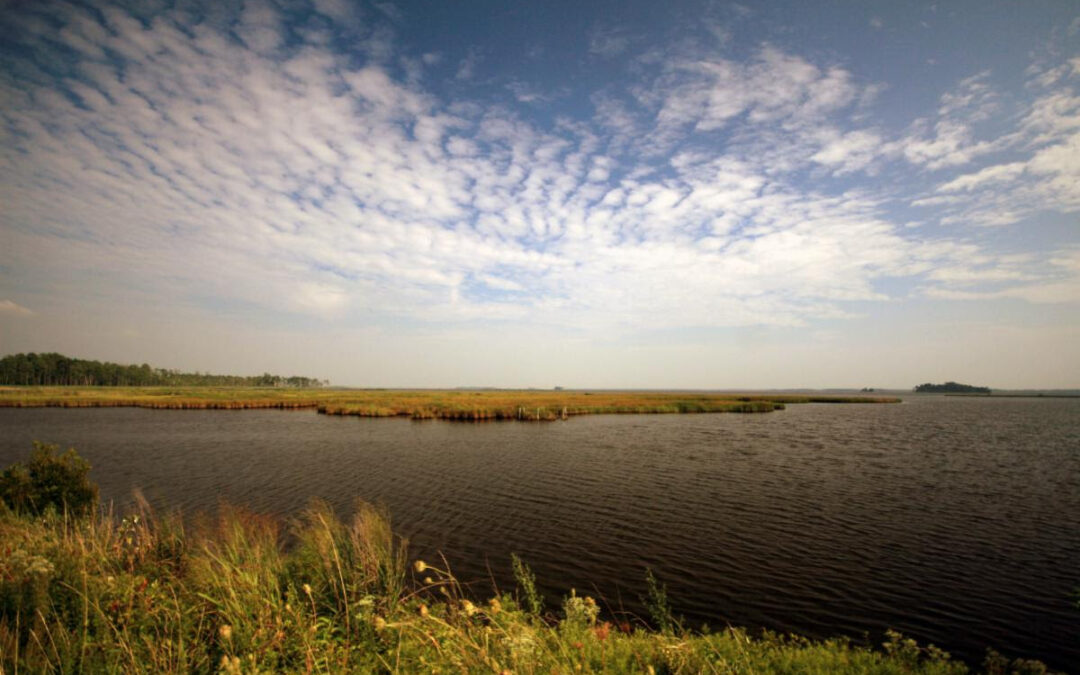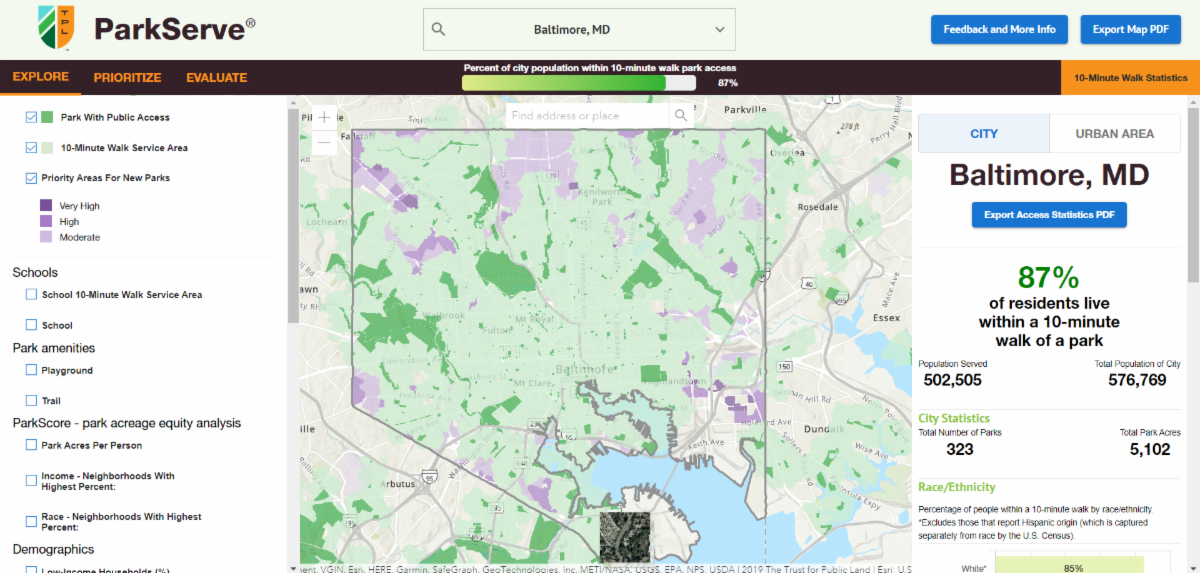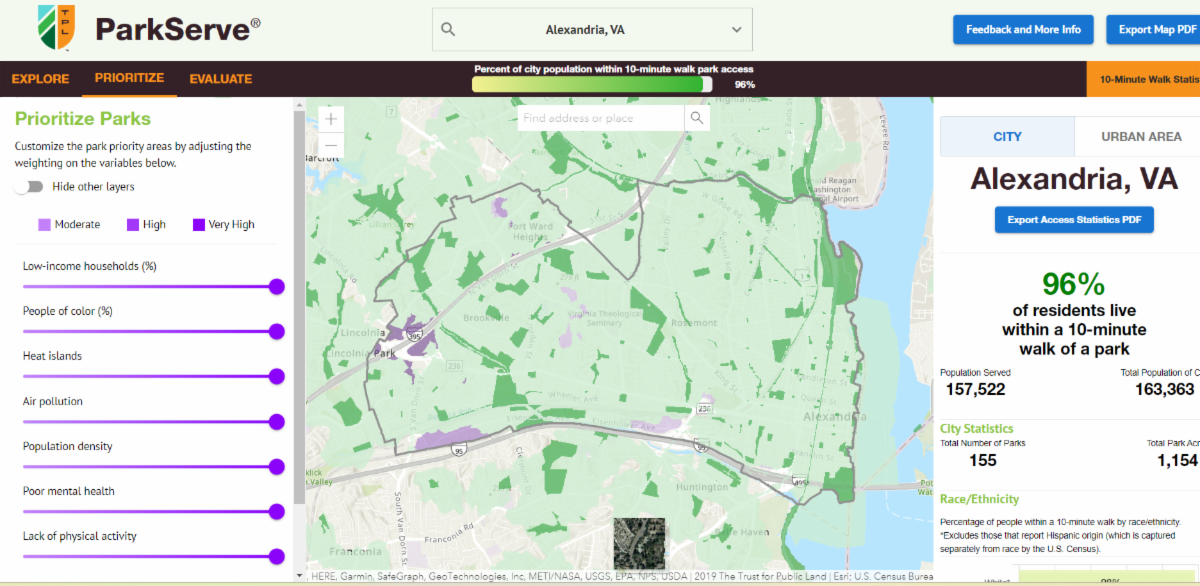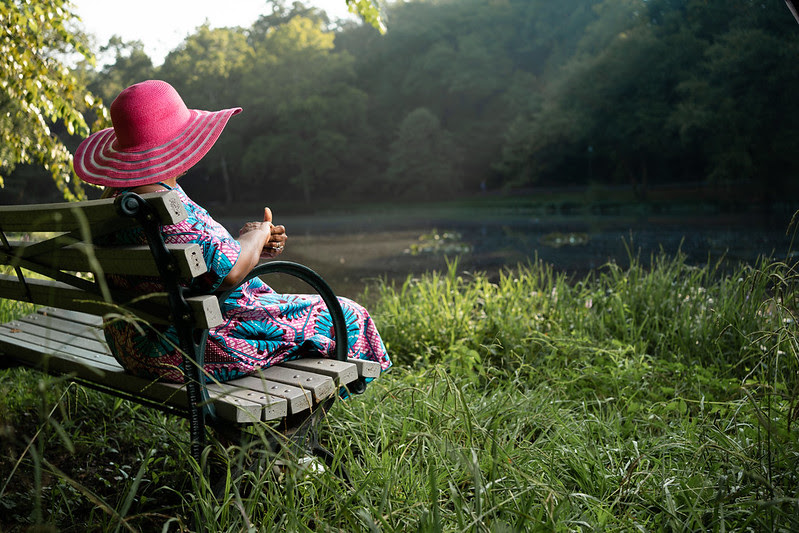Image Caption: heading 5, italicized
Written by Jamal Childs
In cities across the United States–over 100 million people lack access to a park within a 10-minute walk from their homes. Earlier this year, we showcased the CCP Green Space Equity Mapper that helps prioritize conservation in low-income communities and communities of color with limited access to open space across the landscape throughout the watershed. Now the Trust for Public Land has built a powerful tool called ParkServe that zooms into different communities and helps pinpoint park investments in communities to close the gap in park access nationwide. This mapping platform aims to revolutionize park planning, addressing critical aspects of park needs, climate considerations, equity and public health.
The platform makes it easier to strategically identify where park investments should be made, so that the most vulnerable communities can get the support they need for sustainable development. ParkServe’s versatility is demonstrated in its ability to showcase priorities based on diverse factors. Users of this tool can activate layers to explore detailed population data, providing valuable insights into the demographics of park accessibility. Leveraging the 10-minute walk tool, ParkServe calculates the percentage of residents living within easy reach of a park, offering a tangible metric for measuring accessibility.
Map representing Baltimore residents’ proximity to parks
In-Depth Population Analysis and Prioritization
A distinguishing feature of ParkServe is its display of population data broken down by age, race, ethnicity and income. This comprehensive analysis provides a subtle understanding of the diverse communities the city’s park system serves, which is essential for developing focused conservation and park development plans.
The generated data is not just informative but also practical. ParkServe allows users to download and export the demographic breakdown of who lives within a 10-minute walk of each individual park, as well as the whole city or urban area. This could help decision-making in city governments and community organizations plan and target new parks. This data-driven approach fosters transparency and accountability, two crucial components in the pursuit of the fair distribution of green space.
ParkServe’s customizable park priority areas feature identifies areas where residents lack 10-minute walk access to a park and prioritizes areas based on seven factors – percent of low-income households, rate of poor mental health, rate of physical inactivity, pollution burden, percent of people of color, population density and urban heat. These factors point to where new parks are needed most to fill the gap in park access equitably and in recognition of the multiple benefits of parks.
Park Prioritization Data of Alexandria, VA
Limits and Impact
ParkServe has limitations even with its potential for transformation. The accuracy of the foundational work is what determines how effective the tool is. Users can submit edits to the data through ParkReviewer, and they are added every month. But relying solely on a map to make decisions is not a good idea. ParkServe’s effectiveness depends on proactive cooperation, highlighting the significance of acknowledging those actively laying the foundation for its success. This underscores the importance of a collaborative strategy for a more accurate and meaningful park planning process—one that combines technological innovation with the knowledge of local communities. Involving community members is a sure way to increase stewardship and involvement.
From the source
Kristen Weil, senior program manager for geospatial analysis at the Trust for Public Land, acknowledges that, “Parks are critical, multi-benefit infrastructure. From mitigating heat islands to giving residents opportunities to recreate and enjoy nature, parks are essential to human well-being.” ParkServe allows the user to adjust the weighting on these seven factors to customize where their priority areas may be. This strategic approach considers both the qualitative and quantitative aspects of public health and well-being with park accessibility. This is in line with the broader goal of fostering community well-being and ensuring that conservation efforts lead to noticeable improvements in accessibility.
Queen Shabazz at Forest Hill Park, Richmond, VA
Image credit:
- Trust for Public Land
- Trust for Public Land
- Benjamin Israel for Taking Nature Black USFS
Lightning Update is a regular communication of the Chesapeake Conservation Partnership. Any opinions expressed are those of the authors and do not necessarily reflect positions of the Partnership or member organizations.
To share a success story, news, or important event, send your information to:
Support for the Chesapeake Conservation Partnership is provided by:
National Park Service Chesapeake
EPA Chesapeake Bay Program
USDA Forest Service
Pennsylvania Department of Conservation & Natural Resources
Maryland Department of Natural Resources
Virginia Outdoors Foundation
US Fish & Wildlife Service
Chesapeake Conservancy
The Chesapeake Conservation Partnership is co-convened by:







